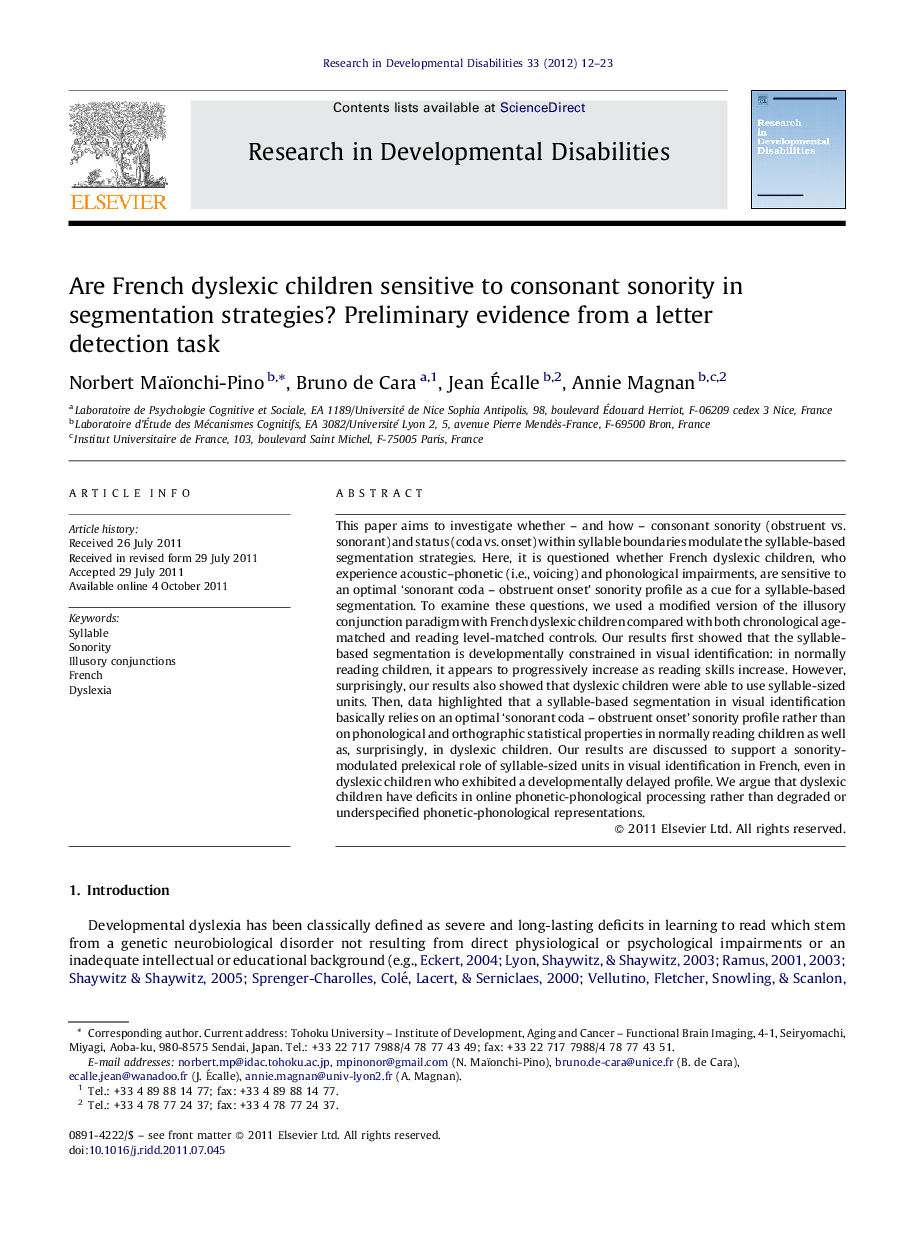| Article ID | Journal | Published Year | Pages | File Type |
|---|---|---|---|---|
| 371620 | Research in Developmental Disabilities | 2012 | 12 Pages |
This paper aims to investigate whether – and how – consonant sonority (obstruent vs. sonorant) and status (coda vs. onset) within syllable boundaries modulate the syllable-based segmentation strategies. Here, it is questioned whether French dyslexic children, who experience acoustic–phonetic (i.e., voicing) and phonological impairments, are sensitive to an optimal ‘sonorant coda – obstruent onset’ sonority profile as a cue for a syllable-based segmentation. To examine these questions, we used a modified version of the illusory conjunction paradigm with French dyslexic children compared with both chronological age-matched and reading level-matched controls. Our results first showed that the syllable-based segmentation is developmentally constrained in visual identification: in normally reading children, it appears to progressively increase as reading skills increase. However, surprisingly, our results also showed that dyslexic children were able to use syllable-sized units. Then, data highlighted that a syllable-based segmentation in visual identification basically relies on an optimal ‘sonorant coda – obstruent onset’ sonority profile rather than on phonological and orthographic statistical properties in normally reading children as well as, surprisingly, in dyslexic children. Our results are discussed to support a sonority-modulated prelexical role of syllable-sized units in visual identification in French, even in dyslexic children who exhibited a developmentally delayed profile. We argue that dyslexic children have deficits in online phonetic-phonological processing rather than degraded or underspecified phonetic-phonological representations.
► Syllable-based segmentation is sonority-modulated in French dyslexic children. ► Preference for an optimal ‘sonorant coda – obstruent onset’ within syllable boundaries. ► Orthographic and phonological statistical properties have a second-ranking influence. ► Dyslexics’ impairments may rely on online phonetic-phonological processing deficits.
